Update 06.07.2019 -- Run 9 embedding:Matched vs. Unmatched Track Comparison (Including Those Matched To Towers)
We're still trying to better understand the tracks that aren't matched to a generated particle from the Run 9 dijet embedding sample. The previous entry in this study can be found here:
A word about matching first; a successful match between a reconstructed track and a generated particle requires 3 things:
- The reconstructed track passes all of our track QA cuts
- There is a generated particle that the reconstructed track was associated to by the embedding software
- The percentage of TPC hits common to both the reconstructed track and the generated particle is greater than 50%
So in the "unmatched" category you get both tracks that do not have an associated generated particle, and you get tracks that do have an associated generated particle but didn't pass the 3rd condition. With that being said, we first checked how many times we find a track with pT > 8 GeV/c that is not matched to a generated particle.
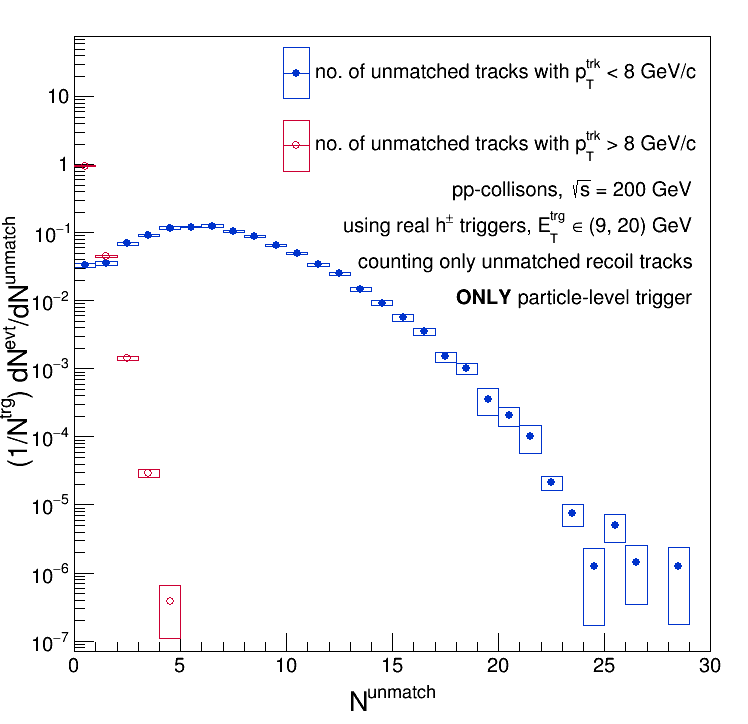
So not too surprising: you get extremely few events where there are one or more unmatched tracks with pTtrk > 8 GeV/c. Next, we looked at the tracks that were projected onto BEMC towers and sorted them into tracks that were successfully matched back to a generated particle (labeled "matched tracks" below) and tracks that were not (labeled "unmatched tracks" below). The plots below show various quantities associated with these tracks and towers.
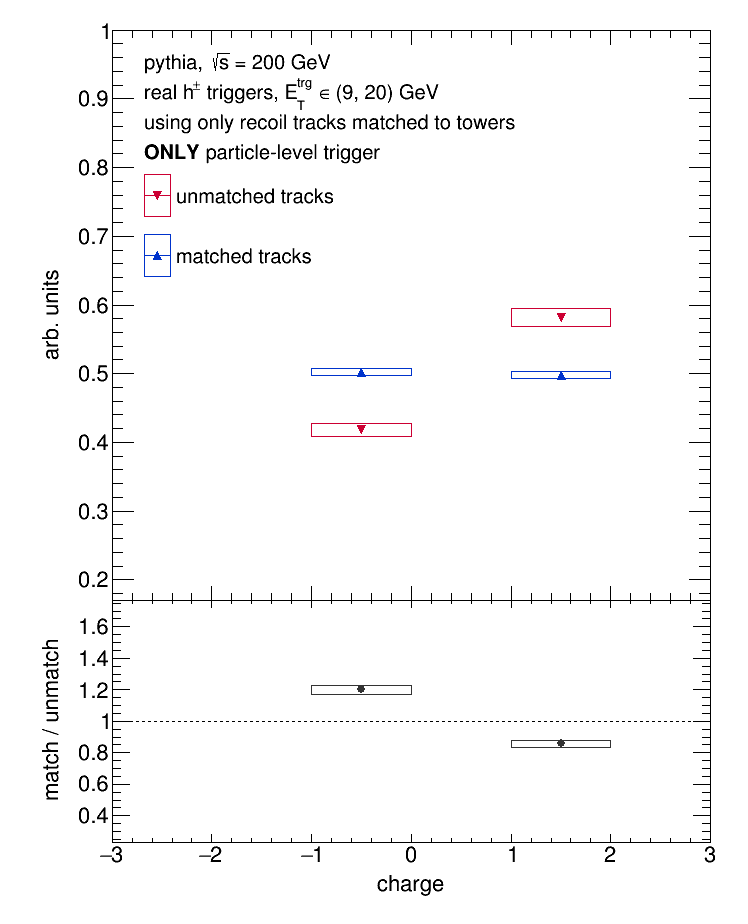
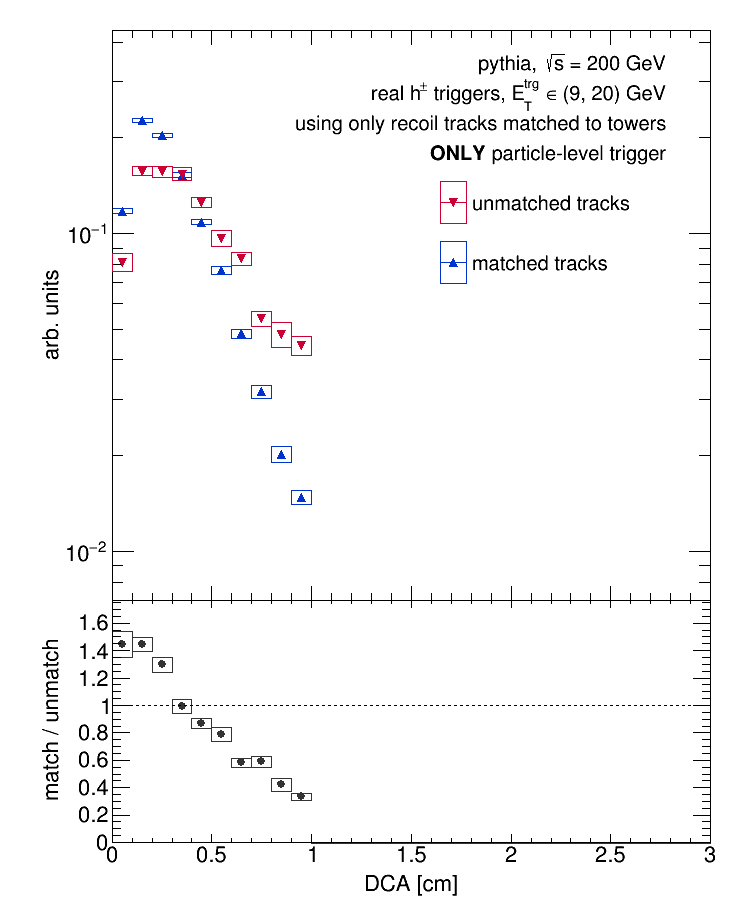
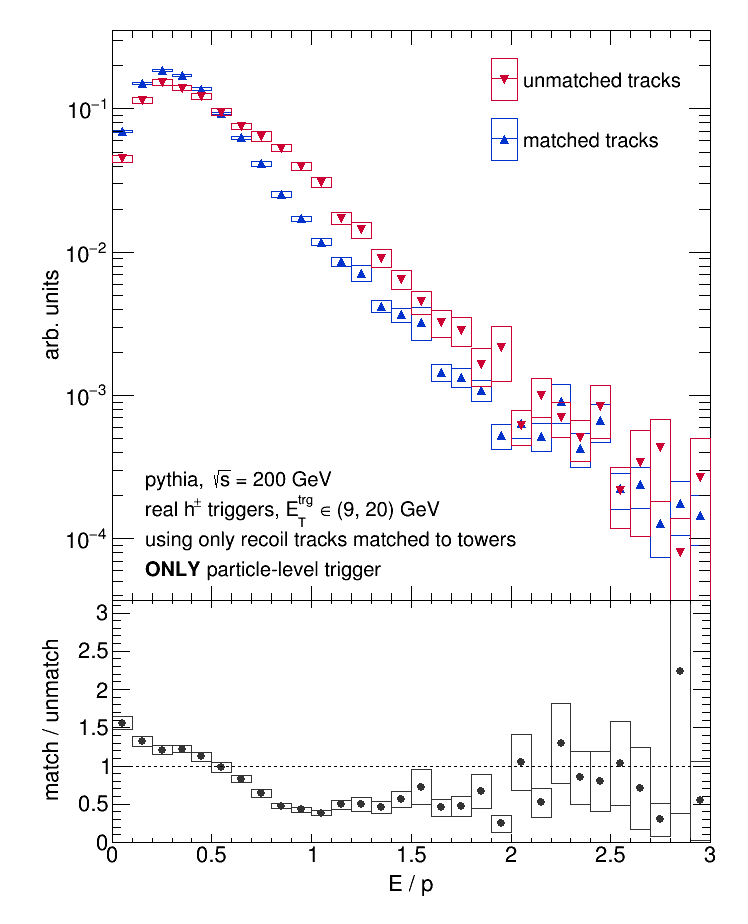
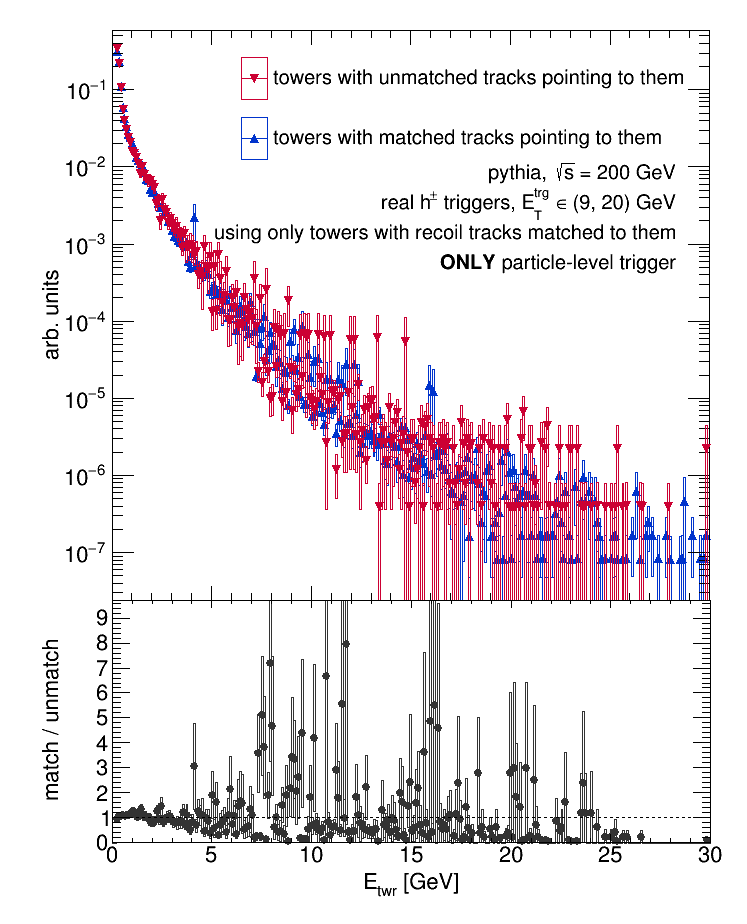



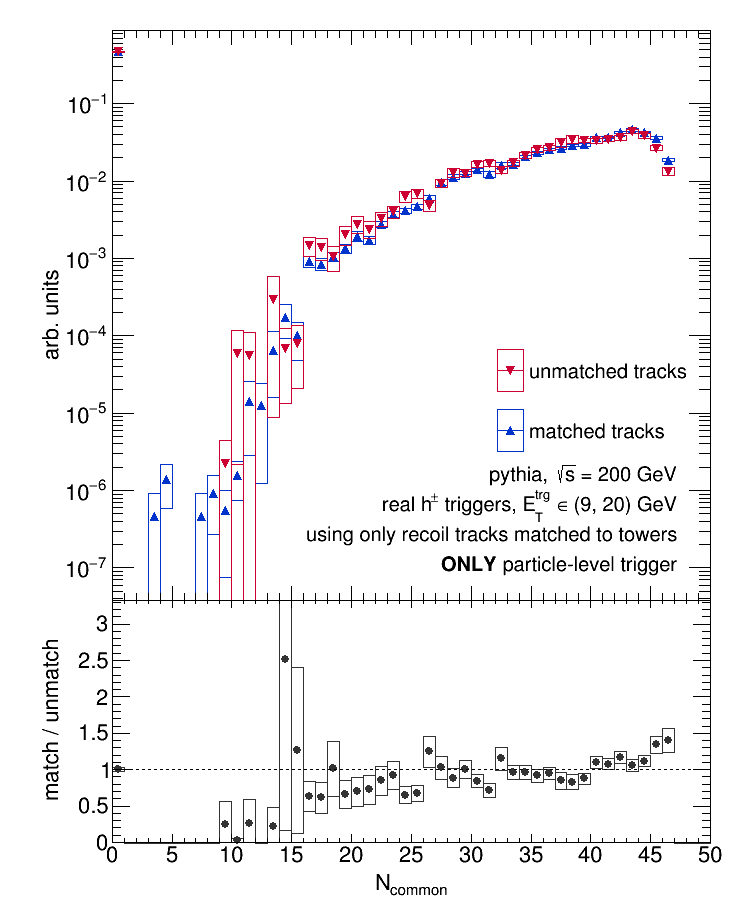

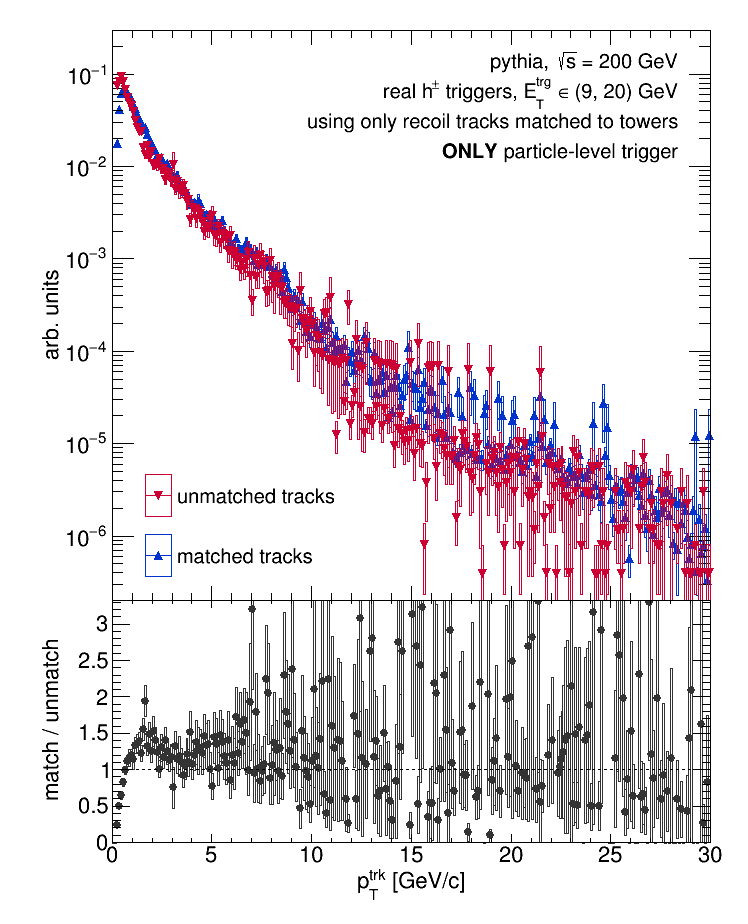

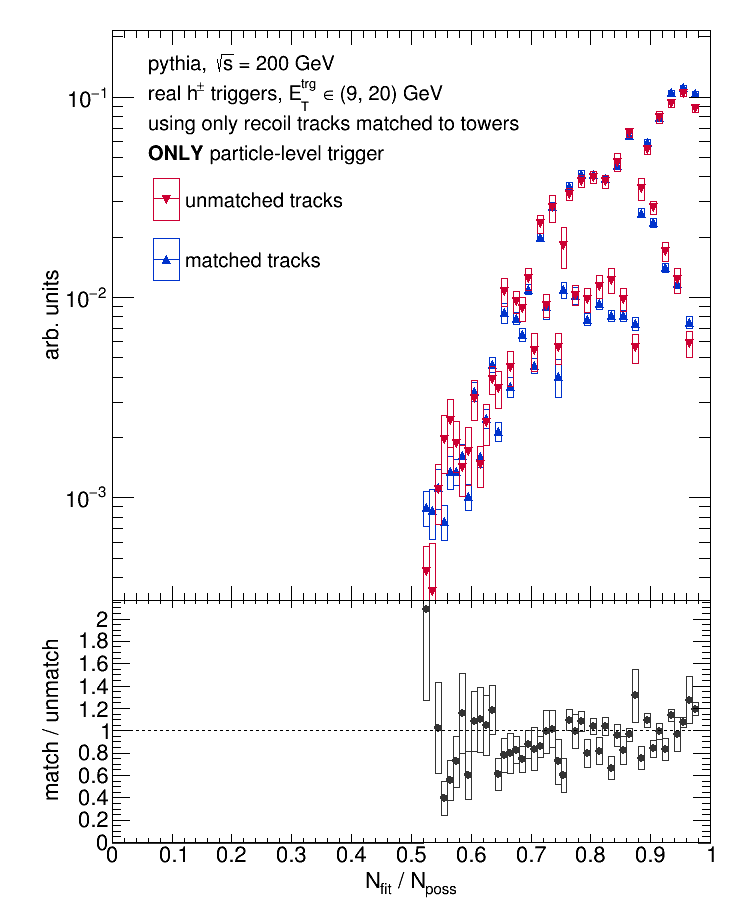
The quantities 'IdTruth' and 'QaTruth' are the variables associated with the matching conditions (2) and (3) up above, respectively. 'IdTruth' is the index of the generated particle the reconstructed track was associated with by the embedding software, and 'QaTruth' is the percentage of TPC hits common to the reconstructed track and its associated generated particle. All of the above quantities are consistent between the "matched" and "unmatched" categories except
- the DCA distribution, which is broader for the unmatched tracks
- the E/p distribution, which is broader for the unmatched tracks
- and the pTtrk distribution, which is softer for the unmatched tracks.
Which aligns with what we saw for all unmatched tracks (i.e. whether or not they were projected to towers) compared to all matched tracks (likewise): the DCA distribution was broader and the pTtrk distribution was softer for all unmatched tracks.
- dmawxc's blog
- Login or register to post comments
